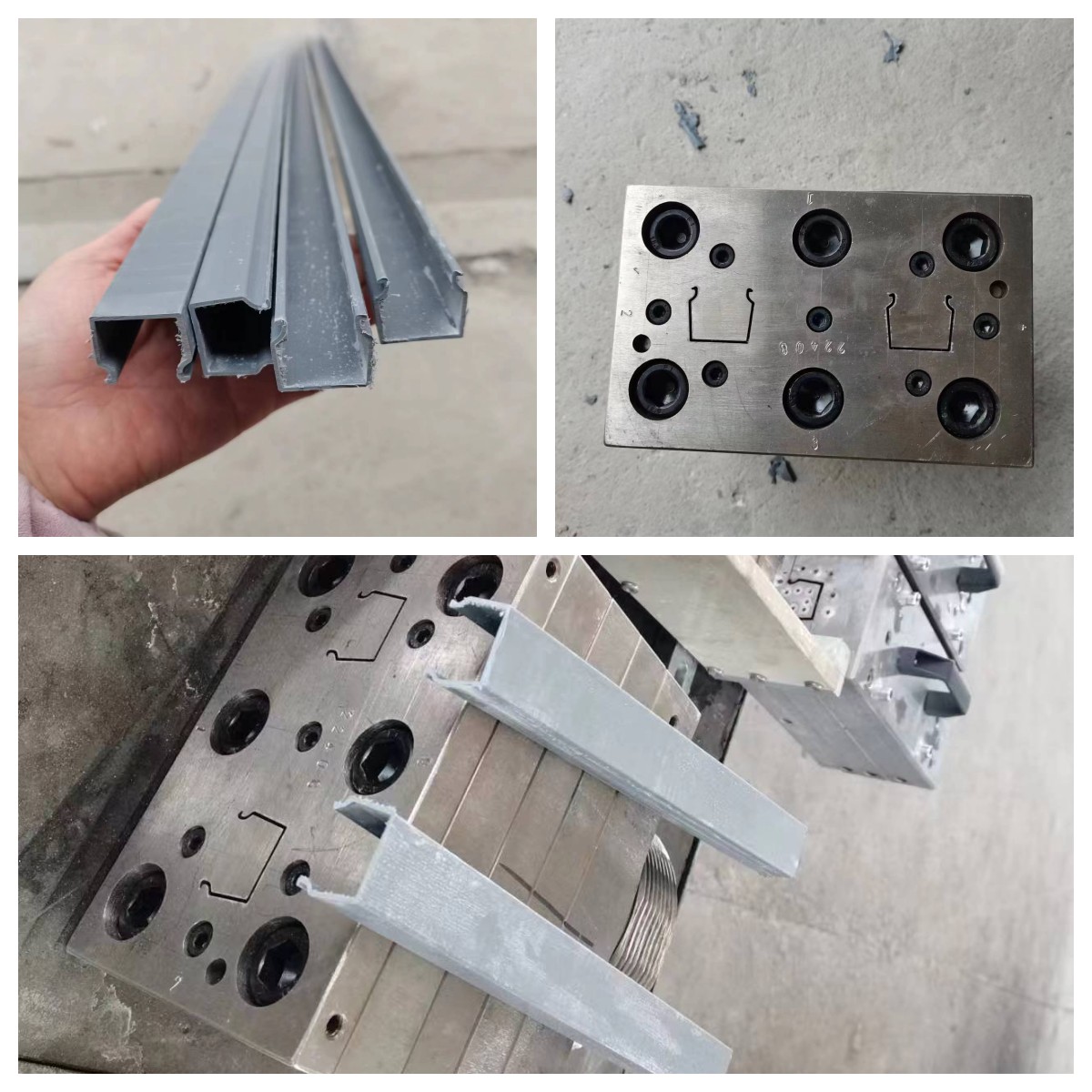Add: 21-2#, Xinggang Road, Huangshigang Industrial Zone, Huangshi City, Hubei Province
Tel: 0086-13597667790
Contact: Kate Yan
E-mail: kate@hongxingmold.com
Website: www.hongxingmold.com
Details

Extruded products such as pipes and profiles are the usual applications
of poly(vinyl chloride) (PVC). The requirement of homogeneity of
structure and properties along the length of the extruded products
is of high importance in technical products. The properties along
the length of the extruded PVC products may be determined by the
measurement of mechanical properties [1–4]. In PVC, inclusion of
nitrile rubber improves the oil and solvent resistance, low-temperature
flexibility, abrasion resistance, flex resistance, tear resistance, and
ageing characteristics [5].
9.1 Poly(Vinyl Chloride) Formulation
In PVC formulation, many areas of rigid PVC have not seen dramatic
changes in technology over the past 10–15 years. There are areas
where the technology is developing rapidly. Rigid PVC formulations
have garnered much interest in three areas, in the extrusion of:
• PVC foam
• PVC–wood composites
The most recent formulation technology in each area indicates
enhancement by additives on the processability, appearance and
performance of the final product. Potential applications of each
formulation lead to improvements in certain key properties [6].
150
Update on Troubleshooting the PVC Extrusion Process
9.2 Wood – Poly(Vinyl Chloride) Composites
There are environmental reasons for replacing part of the plastic with
wood. Challenges for wood–plastic composites include improving
the toughness, reducing the weight, and improving long-term
properties. There has been a lot of research over the past decades
on different types of coupling agents to improve the adhesion
between wood and plastic. Wood–plastic composites (particularly
PVC–wood composites) are used to replace impregnated wood in
many outdoor applications because of recent regulations regarding
forest preservation.
9.3 Medical Applications
PVC material is very useful for the manufacture of blood bags and
other medical applications. PVC is flame-retardant and easy to
degrade due to degradation of chlorine present in the polymer, which
leads to colour changes. Many flexible products are very useful in
medical applications. However, plasticiser leaching in the case of
phthalate plasticisers proved to be very harmful. Hence, flexible PVC
requires better plasticisers and no oozing.
9.4 Construction
PVC is useful in the construction industry. Pipes and profiles are made
out of different techniques from other construction products. Flame
retardancy is the important property required in the building industry.
9.5 Biodegradation
PVC is an unstable polymer. As the chlorine in PVC is freely available,
degradation occurs continuously and leads to yellowness or burned
material. PVC is cheaper compared with other materials, so mixing
of biodegradable materials is not worthwhile.
Future Requirements: Developments in Poly(Vinyl Chloride)
151
In indoor pollution (e.g., chemical, biological, irritants), PVC–wood
composites are well-suited and replace traditional materials in
building and construction sectors. They require less maintenance and
cleaning, which lowers the level of indoor pollution [7].
Furthermore, improvements in long-term properties such as durability
during outdoor exposure and long-term load performance, are
necessary. Exposure to ultraviolet radiation and moisture during
outdoor use is of particular concern for wood–plastic composites [8].
Information